Louis Brus
Biographical
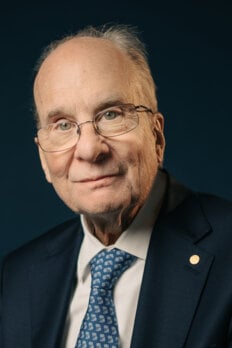
Early Life
Iwas born in Cleveland, Ohio in 1943. My earliest memory is my father Victor John Brus coming home from World War II in 1946. He was an officer in charge of communications on a large US Navy troop transport and assault ship in the western Pacific and was returning home after an absence of more than two years. During his service, my mother Mary Alicia Megede and I lived with her parents in a rural Missouri town of southern culture, where her family of German origin had operated a jewelry store since the Civil War. My grandmother Megede ran the store while my mother took care of me.
My father took a job as an insurance administrator in downtown Chicago, and we moved into a small rowhouse in the South Shore area, perhaps 4 miles south of the University of Chicago. This neighborhood was somewhat dangerous then and much more violent now. In 1948, my brother John was born. I walked with my mother as she went to vote in the election that year; she voted for Truman and my Dad voted for Dewey. I remember them discussing the election at the dinner table.
Tragically, my mother became ill and was hospitalized for the rest of her life. In order to keep the family together, my father’s mother came to live with us. She was in her seventies and was born in 1876. She loved us, but she was frail and had decidedly old-fashioned ideas. My Dad and I did all the housework and shopping. I washed dishes and did the family laundry on an old wringer washer in the basement. We were busy just doing what had to be done, with little time for culture. We did have a few books, as my mother had been a high school teacher earlier in life. In her absence, my brother and I did not learn common social graces, such as how to entertain visitors who came to the house, or how to talk to girls.
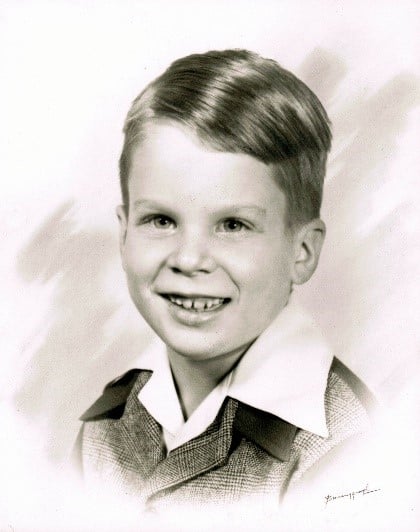
I attended the local Chicago public school through the 8th grade. Typically, we had 42 students in a class, and the quality of teaching was uneven. In the fourth grade I had a teacher who lectured us on the evils of communism, rather than teaching us spelling. Just as I was to go into high school, my father was promoted to head the Kansas City, Missouri, office. We moved to a pleasant green suburb in Johnson County, Kansas, which was quite a contrast to our Chicago neighborhood. I attended a far better high school than I would have in Chicago with accelerated classes. For the most part, I did well academically without much effort. However, I remember struggling on my own to read the great books, such as The Brothers Karamazov.
My father had worked his way through university during the Great Depression, and he believed I should work during my “spare time” after school. He got me a job as a clerk in the local hardware store. I worked there 24 hours a week on top of attending high school. The hardware store was certainly a valuable experience for the introverted, shy, and bookish boy that I was. I learned something of how to deal with different people, and how to use tools and take apart machines with my hands.
In the 1950s, the United States greatly expanded science and engineering, partly in response to the cold war with the Soviet Union. A military draft existed, and most men were veterans of service in World War II or Korea. I liked science, but never imagined I could make a career out of it. While both my mother and father were college graduates, no one in our extended family had ever been an engineer, scientist, doctor, or lawyer. I planned to serve in the military and then be a businessman like my father. In 1961 I enrolled in Rice University with a Navy scholarship that obligated me to serve on active duty after graduation.
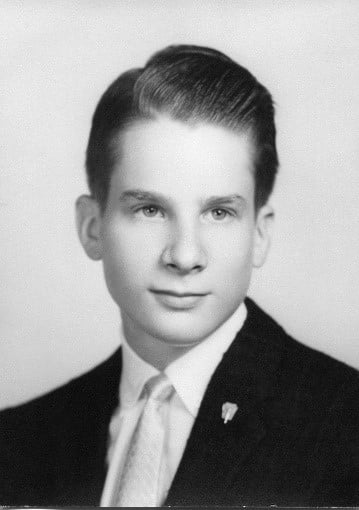
Education at Rice and Columbia
Rice was a rigorous school that challenged me and opened my eyes. When I graduated in 1965, I had begun to think like a scientist. At Rice, the undergraduate student body was 80% male with many engineering majors. Typically, students came from small towns in Texas, and a cowboy culture prevailed. Life in the residential colleges was chaotic, with systematic drinking. Although I did not realize it, Rice was racially segregated when I first arrived. In contrast as I write this now in 2024 Rice has a black President – Reginald DesRoches, a sign of the progress that both Rice and American culture has made over the years.
We took five classes a semester and had lectures six days a week. All freshmen were required to take American History, which has remained a strong interest all my life. I declared a chemical physics major, showing my interest in both fields as well as in theory, to the extent I could understand it. I took at least one class each in chemistry, physics, and mathematics every semester for four years. None of us thought about biology; for example, I did not learn about DNA and heredity until I became a graduate student at Columbia.
Zevi Salsburg taught physical chemistry and had a strong influence on me. He was a pioneer in large statistical mechanics calculations on computers at Los Alamos. I remember him saying that the machine made a mistake every 300,000 steps, and that he hoped this would not affect the result too much. Bob Curl was a beginning assistant professor; I did not study with him but got to know him and Rick Smalley well later when I would come back to review the chemistry department and to give talks. B. Frank Jones was an excellent lecturer who taught junior level differential equations. I vividly remember the fall semester in his class. There were perhaps 75 students, essentially all engineering and hard science majors. He gave out only 3 As and 7 Bs in his final grades. When I tell this now to Columbia undergraduates, they are amazed.
The Navy sent me out into the fleet during my undergraduate summers to learn something of the real Navy. These summers had a major impact on me, as much as my academic education at Rice. I spent time on an old World War II destroyer in San Diego, with Naval Aviation in Corpus Christi, Texas, and on a modern aircraft carrier in the Mediterranean. Carrying a heavy pack and rifle, I assaulted a beach in California in a training exercise with the Marines. I had a flight on a jet trainer and watched flight operations day and night on the carrier. Carrier flight operations are intrinsically dangerous. Three pilots died during my seven weeks on the carrier. I toured the Navy’s second nuclear submarine – USS Seawolf. On my 80th birthday last summer, I gave a talk (now on Youtube) which describes some of these experiences.
At Rice I became increasingly interested in science. What would happen to me after graduation when I went on active duty? Perhaps, I thought, I could serve on a nuclear submarine. To my great luck, in my senior year the Navy established a new policy opening the possibility of going to graduate school before active duty. I jumped at the opportunity. I remember thinking that “quantum mechanics is so interesting that I would like to learn more of it before getting on with my life.” So, I joined the chemical physics graduate program at Columbia in the fall of 1965, just as many others my age were sent to Vietnam.
At Columbia, most of my graduate classes were in physics. However, most of my research interests and friends were in chemistry. Both departments were strong, with outstanding faculty. My classwork in electricity and magnetism, mathematical methods, and advanced quantum gave me the foundation to teach myself new things in later years. I attended colloquia given by the outstanding scientists of the day. My advisor was chemistry professor Richard Bersohn, who had been a PhD student with John van Vleck at Harvard, and a postdoc with Willis Lamb. He was trained as a pencil and paper theorist. In the 1950s and 1960s, he realized he did not like computer modeling, which was beginning to dominate theory. At this point he turned to experiment. When I joined, he had sub-groups in gas phase small molecule kinetics and in biophysics. I did a thesis on the velocity dependence of the reaction of Na(2P) with I2.Excited sodium atoms of differing speeds were generated by photodissociation of diatomic NaI in the far ultraviolet. Bersohn and I discussed all sorts of science. He gave his students wide leeway. For example, in 1968 I abandoned my thesis work for a week to read Jim Watson’s just published The Double Helix, recounting the day-by-day discovery of DNA structure. Bersohn was a gentle soul who had a great influence on me, and people have told me I copy his mannerisms.
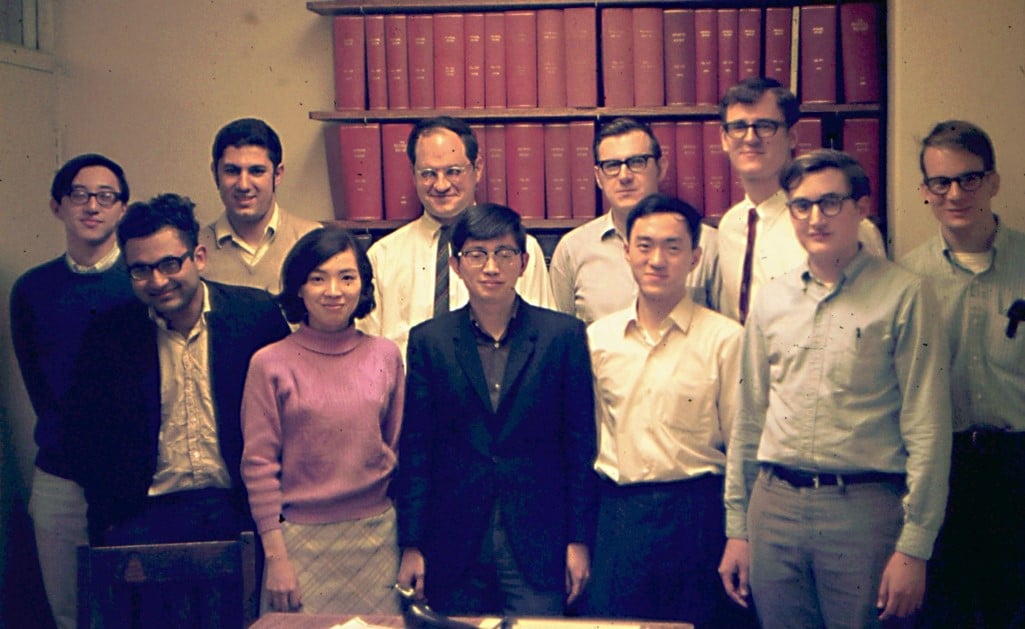
U.S. Naval Research Laboratory
I was lucky again when I finished my thesis in April 1969 and reported to the Navy as a Lieutenant. Through a series of chance occurrences, I was ordered to the Naval Research Laboratory (NRL) in Washington DC. as a “Scientific Staff Officer”. NRL, the most basic of the Navy’s various R&D facilities, had perhaps two thousand civil service scientists and engineers. I had a certain degree of freedom, as NRL had no assigned responsibilities for my position. I wore my uniform only one day per week. I had no budget or lab space but did have partial ability to choose which group I joined, and what to work on. The first year, I worked in an applied physics group on chemiluminescence during surface oxidation of silicon in high vacuum. On my own, I spent one hour a day studying Kittel’s textbook on solid state physics. This was really interesting: it discussed the same issues of structure and bonding that occur in molecules. Band structure was a natural outgrowth of molecular orbital theory. Yet, in the limit of large size there were new phenomena that had no direct counterpoint in chemistry.
I worked with Ming Chang Lin on exothermic gas phase reactions that might lead to product vibrational population inversions for infrared chemical lasers. One day, I managed to blow up a large glass vacuum line by co-condensing ozone and carbon suboxide in a liquid nitrogen cold trap. I was not injured but had to pick shards of glass out of my hair. Towards the end of my 4 years at NRL, I worked with Jimmy McDonald on tunable dye laser excitation of molecular fluorescence in the dilute gas phase. We were trying to understand dynamic irreversibility in isolated molecules. All in all, I published 14 papers during my time at NRL.
When I arrived at NRL, the Navy sent investigators to interview my colleagues at Columbia. I was given a high security clearance. About a year later, an FBI agent came to talk to me. He showed me pictures of staff members of the Soviet Embassy. As it turns out, a large group of Soviets lived in the same apartment building as I did in Arlington, Va. He wanted to know if they had made friends with me. Luckily, I did not realize they were in the same building or recognize them. The agent then spent an hour or so discussing how his job was made more difficult because J. Edgar Hoover would not allow him to tap the telephones of the Soviets.
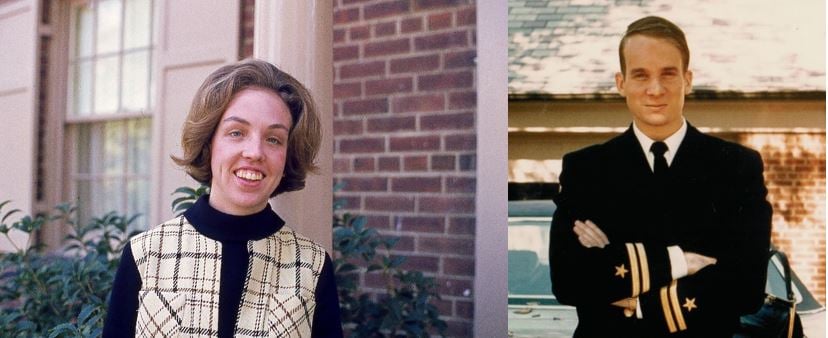
In Washington, D.C., I met Marilyn Drennan in the fall of 1969, and we were married within a year. She was a violinist trained at the Eastman School of Music. Her father had been an FBI agent during World War II and was now a Methodist minister. She had a large extended family in the DC area, and I have many fond memories of family gatherings. As of 2024 we have been married 54 years with three children – Michael, Christina, and Elizabeth – and four grandchildren. For many years, we vacationed in the mountains out West each summer. Michael is now a psychiatrist and Christina a medical doctor. Elizabeth is a teacher and published writer of fiction.

Bell Telephone Laboratories
As my time in the Navy was coming to an end, I was fortunate that my mentor Rich Bersohn wrote to Bill Slichter, head of materials research at Bell Labs in Murray Hill, NJ. They had been graduate students together at Harvard in 1946 after returning from the war. I was invited to interview and was hired in the summer of 1973. Bell Labs was the research facility of the national telephone monopoly AT&T. As I remember, there were about 350 scientists in the materials division and about 300 in physics. There were also divisions for mathematics and for quantum electronics. Bell Labs was focused on long range research to support the communications and computer industry. Our goal was to discover new phenomena and materials, to quickly figure out what was going on, and to write pioneering patents.
I set up a spectroscopic laboratory. Bell Labs believed that in research, working scientists were best positioned to figure out where the real opportunities were. There was substantial leeway to define your own project. If I wanted to discuss something, I could almost always find an expert somewhere in the building. The culture strongly encouraged open discussion. There were no students, and very few postdocs. Many projects required collaboration to assemble the necessary expertise and equipment. Over time, the management tried to assess who was especially creative in defining projects and building teams to get them done. The strength of the Labs was that experienced scientists could focus full time on a difficult problem, typically too hard for a graduate student. Occasionally, as in the cases of optical communications around 1975 and organic electronics around 1990, management would assemble a larger team for a deep sustained effort. I never wrote a proposal or had a definite budget in the 23 years I was there.
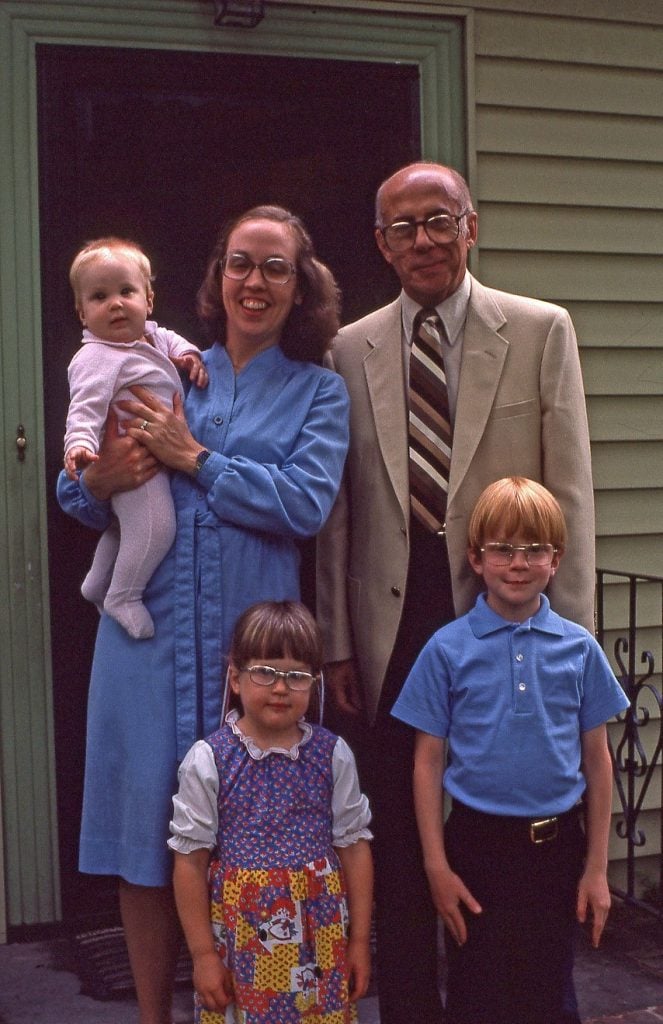
Vladimir Bondybey and I explored structure and dynamics in excited electronic states of molecules trapped in rare gas matrices at 4 degrees Kelvin, using nanosecond tunable dye lasers. This experiment built upon my experience in gas phase, small molecule spectroscopy. Rare gas van der Waals hosts minimally perturb intrinsic molecular structure while providing an external heat bath to allow relaxation and flow of energy into the environment. We studied the host cage effect on diatomic ICl and perfluoroakyl iodide dissociation processes, and on the formation of a small host bubble around the lowest NO Rydberg state. We observed the internal structure of the weakly bound rare gas diatomics XeO and XeF. The internal electronic structure of the (O2)2 dimer proved to be especially interesting. We also showed that the vibrational relaxation of diatomic OH was controlled by pseudo-rotational local modes with hydrogen bonding to host atoms. I also observed internal processes in large organic species, such as proton tunneling in tropolone and methyl salicylate.
In 1981, I had been out of graduate school for 12 years. I resolved to try to find problems that were more in the mainstream of chemistry. I developed pulsed transient resonance Raman spectroscopy as a technique for observing vibrational structure of short-lived intermediate species in chemical reactions: one laser pulse to initiate a reaction and a second delayed pulse at a different wavelength to generate Raman spectra. Postdoc Steven Beck and I applied this technique to solution phase organic reactions at room temperature, particularly in aqueous inverse micelle solutions because the water Raman background signal is weak. I began to read the aqueous metallic and semiconducting colloid literature. We observed surface photochemistry of adsorbates on semiconductor colloids. In 1983, we first observed the band gap shift of small CdS colloids.
I decided to focus on colloids. The basic motivation for studying semiconductor colloids (quantum dots) was to understand the progression from molecule-like behavior at small size (perhaps 1–3 nm) up to semiconducting behavior at large size, and to make macroscopic amounts of intermediate size quantum dots by colloidal synthesis. Synthetic chemist Michael Steigerwald and I formed a close collaboration. This was a radical shift in my research. No academic research group in the US was interested in this problem. In the 1980s, I traveled around the country giving colloquia explaining why this should be considered a branch of chemistry. Inside Bell Labs, this subject was of long-term interest as transistors became smaller and smaller each year. I have described this work in reviews,1234 and in an autobiography written for the Kavli Foundation in 2008.5 Significant progress occurred with postdocs Paul Alivisatos who arrived in 1986, and Moungi Bawendi who arrived in 1988. Quantum Dot science spread widely as both Alivisatos and Bawendi went on to establish large academic groups. Bawendi and I shared the Nobel Prize for chemical quantum dots in 2023.
Bell Labs was entirely supported by a small tax on AT&T revenues, which were steady in good times and bad. This may sound idyllic, but as time went on, I lived under a cloud. The Federal Government sued to break up the AT&T monopoly. If this were to happen, our financial support would fade away. Each day I would come to work saying to myself, “This cannot last, I must get something significant done today.” My style of research fit very well into the Labs, and management (John Tully, Mark Cardillo, Bob Laudise, and Kumar Patel among others) supported me. I did not want to leave. Nevertheless, as AT&T was progressively dismembered and conditions deteriorated, I knew I had to leave. I returned to Columbia as a professor of chemistry in 1996.
Return to Columbia
In retrospect, moving back to Columbia was a good decision, leading to new ideas and collaborators, and to personal renewal. However, it was a difficult transition. I knew almost nothing of what it takes to be a professor. I had never balanced a budget, written a proposal or taught a class, never trained a beginning graduate student, or mentored a large group, keeping track of many different projects. The chemistry chairman George Flynn tutored me on university life and convinced the administration to build new labs for me. From Bell Labs, I brought my nitrogen dry box and Schlenk line for sample preparation. As my group grew, we built apparatus for Rayleigh, Raman, fluorescence, optical reflectivity, and AFM images of nanostructures.
Common facilities for materials characterization and nanoscience were essentially non-existent. About this time, Tony Heinz was also recruited from IBM and Horst Störmer from Bell Labs. Together, with Rick Osgood, Irving Heman, Ron Breslow, Jim Yardley and George Flynn, we wrote and won NSF, DOE and Keck grants, enabling us to acquire modern equipment and to begin building a culture of collaboration, especially between synthetic and physical groups. Collaboration grew with the arrival of younger faculty, including Philip Kim, Jim Hone, David Reichman, and Colin Nuckolls. Almost every paper had multiple authors as students freely went from one group to another, making measurements and teaching each other. For example, over a period of 14 years I published 27 papers with Tony Heinz, almost all of them with additional co-authors. Working with Tony has been deeply satisfying.
The first semester at Columbia I taught graduate statistical mechanics. I had to spend much of August re-learning material I had not thought about since my time at Rice. Subsequently, I occasionally taught physical chemistry and graduate quantum mechanics. Almost every year I volunteered to teach introductory chemistry-bonding, thermodynamics, and kinetics. In this course, I often included lectures on climate change and possible life in the universe. I must have written more than 100 letters of recommendation for medical school. I enjoy teaching the basic ideas of science to smart Columbia College freshmen who go on to major in all sorts of subjects.
At Bell Labs, I had worked on single quantum dot luminescence, and now at Columbia, we began to try to understand single molecule Rhodamine 6G Raman scattering in aggregated Ag colloids. We found that intense Raman signals came from single molecules at the junction between two large Ag nanocrystals, in agreement with electromagnetic field enhancement theory. Both systems exhibited the blinking characteristic of single molecules under continuous irradiation.
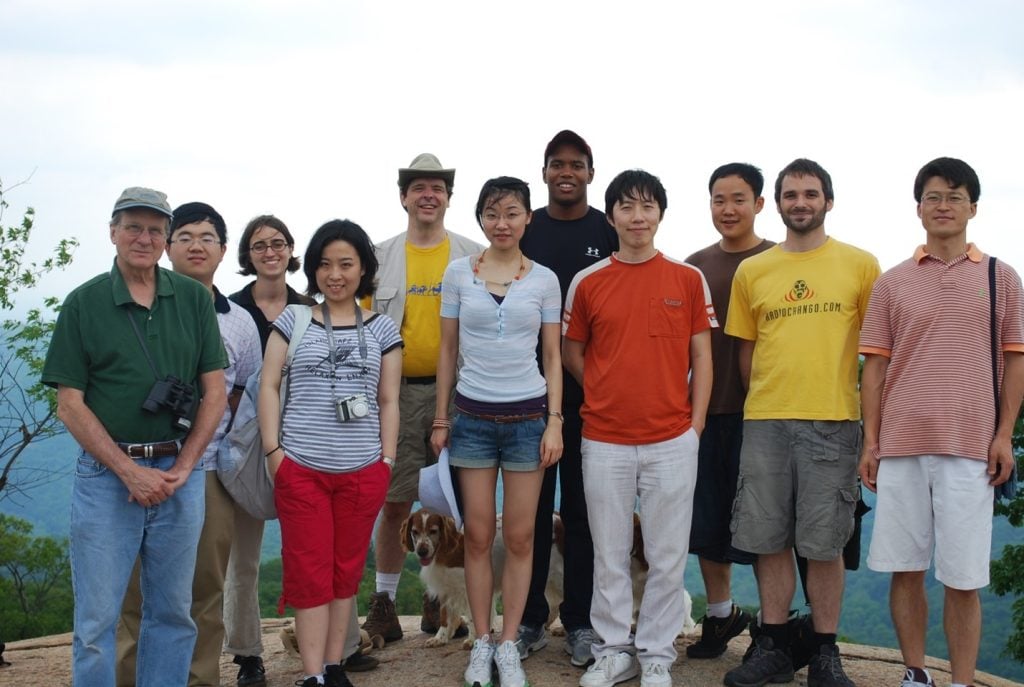
This research was part of a continuing effort to understand field enhancement and photochemistry resulting from optical excitation of metal particles, initially in collaboration with Abraham Nitzan.6 We found that we could use surface plasmon enhanced photoreduction of adsorbed Ag+ ions to grow colloidal Ag nanodisks in a controlled fashion. The mechanism involves surface citrate ligands capturing “hot holes” from metal excitation, thus creating an increase in the double layer potential. This is a sort of light-induced Ostwalt ripening. Even in pure water in the dark, Ag particles on conductive substrates showed Ostwalt ripening. The mechanism involves electrons moving through the substrate to larger particles, followed by Ag atoms on smaller particles oxidizing to Ag+ ions, diffusing to larger particles which have a more negative potential, and reducing back to atoms.
Using electric force microscopy, we studied the photoionization of CdSe/CdS core/shell quantum dots as a function of the underlying substrate. Doped Si surfaces with a higher affinity for electrons due to surface band bending showed a higher quantum dot photoionization yield. We also studied the progressive self-organization of nanocrystal solutions on graphite as hexane solvent evaporated. The van der Waals attraction between nanocrystals increases by a factor of about 4 due to decreased screening in the absence of solvent. This triggers organization via spinodal phase separation in the nanocrystal 2D van der Waals phase diagram.
Rayleigh scattering is a coherent process whose intensity grows as a high power of the number of atoms in an object. The Rayleigh excitation spectrum mimics the electronic absorption spectrum and can be a sensitive spectroscopic tool for larger samples that do not fluoresce. I had been fascinated by the family of single wall carbon nanotubes (SWNTs) ever since hearing Sumio Iijima describe them in the early 1990s. Their crystal structures dictate that some are metals and others are semiconductors. The metallic tubes are unique, far different than normal bulk metals. Similar to chemical quantum dots, they show hybrid molecular and solid state properties. In 2000, we began to study SWNT electronic structure and reversible oxidation, using Rayleigh and Raman scattering. Under ambient conditions, SWNTs are sensitive to hole doping from adsorbed oxygen species, such as endoperoxides. From a comparison of two photon and one photon fluorescence excitation spectra of individual semiconductor tubes, we showed that the peaks in the SWNT absorption spectra were strongly bound excitons, and not van Hove singularities. The exciton binding energies were on the order of 400 meV. These high values result from strong electron correlation created by the 1D structure of SWNTs and from decreased screening compared with bulk 3D semiconductors.7 By growing single SWNT across an open slit in a substrate, we were able to obtain the Rayleigh and Raman spectra of non-fluorescent SWNT, which were subsequently identified by high resolution TEM at Brookhaven National Laboratory.
Our interest in SWNTs naturally grew into an interest in the chemistry of single and few layer graphenes. Like metallic SWNT, Graphene is a metal with a density of states that is so low that the Fermi level is easily shifted over electron volt ranges by charge transfer from adsorbed species. Graphene electronic structure is strongly coupled to the C=C double bond stretch mode. As such, it shows resonance Raman spectra that provide a measure the extent of charge transfer from adsorbed and intercalated species. We studied hole doping from electronegative Br2 and NO2. , As the metallic electrons are pulled out of graphene, it becomes more transparent. The local dielectric constant has a strong effect on the extent of charge transfer. Transfer is higher for internal intercalated species and lower for surface adsorbed and edge species. This is especially clear when alkali atoms are adsorbed.
Graphene is also an excellent substate for Raman scattering. Being a metal, it quenches the interfering background of fluorescence from species directly on the surface. Adsorbed R6G shows especially strong Raman as it shows molecular resonance Raman for visible lasers.
Final Thoughts
In my scientific and personal odyssey over the past seven decades, I have worked on an unusually wide range of problems. Good fortune led me from one institution to another, from one scientific community to another, and from one interesting problem to another. A common theme has been electronic structure: trying to understand what the electrons are doing. My experience in the Navy and Bell Labs has been important in shaping my approach to the rest of my life. Finally, throughout my career, I have been blessed with a stable and supportive home life. This family support allowed my career to flourish.
References
1. M. L. Steigerwald and L. E. Brus, Accts. Chem. Res. 23, 183 (1990).
2. Efros, Al., Brus, L. ACS Nano (2021)15, 6192–6210.
3. Raja, A., Brus, L. J. Chem. Phys. (2023), 159, 020901.
4. L. E. Brus, P. F. Szajowski, W. L. Wilson, T. D. Harris, S. Schuppler, and L. E. Brus, J. Am. Chem. Soc., 117, 2915 (1995).
5. This document can be found on the Kavli Prize website.
6. Louis Brus, Accts. Chem. Res., 41, 1742 (2008).
7. L. Brus, Accts. Chem. Res., 47, 2951 (2014).
© The Nobel Foundation 2024
Nobel Prizes and laureates
Six prizes were awarded for achievements that have conferred the greatest benefit to humankind. The 14 laureates' work and discoveries range from quantum tunnelling to promoting democratic rights.
See them all presented here.
